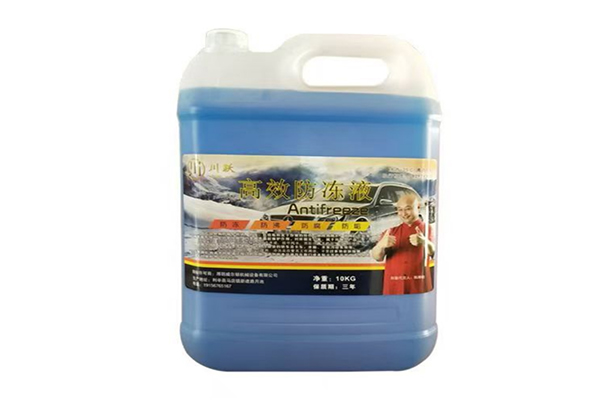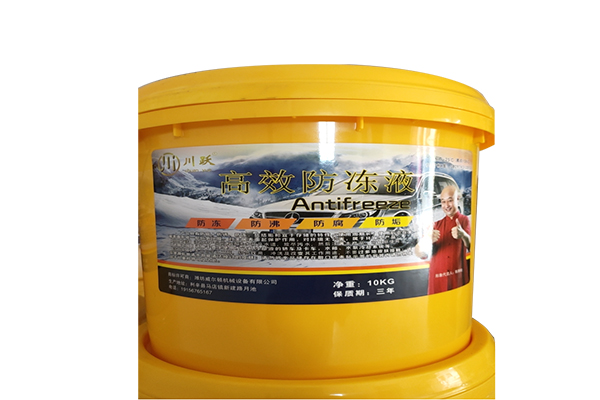What are the requirements for storage and transportation of high-efficiency antifreeze?
Release Time : 2025-02-19
As an important building material additive, high-efficiency antifreeze plays a vital role in winter construction. It can significantly reduce the freezing point of concrete and prevent the damage caused by water freezing and expansion to concrete, thereby ensuring the normal hardening and strength development of concrete in a low-temperature environment. However, the storage and transportation process of high-efficiency antifreeze also needs to be strictly controlled to ensure the stability of its performance and the effect of use.
In terms of storage, high-efficiency antifreeze should be stored in a dry, ventilated, light-proof environment, avoiding direct sunlight and high temperature environment. This is because high temperature and humid conditions may cause changes in the chemical composition of antifreeze, thereby affecting its antifreeze effect. At the same time, the storage container should be made of a material with good sealing properties to prevent oxidation reaction of antifreeze in contact with air. In addition, special attention should be paid to the storage period. Generally, the shelf life of high-efficiency antifreeze is between one and two years. Antifreeze that exceeds the storage period should be tested for performance and can only be used after confirming that there is no abnormality.
In terms of transportation, high-efficiency antifreeze should be transported by special transportation vehicles to ensure that there is no leakage and contamination during transportation. Since antifreeze is usually corrosive, direct contact with the skin, eyes, etc. should be avoided during transportation, and appropriate protective equipment should be worn. At the same time, the transport vehicle should be kept in good operating condition to ensure that the antifreeze will not be damaged by vehicle bumps during transportation. During transportation, attention should also be paid to temperature control to prevent the antifreeze from deteriorating due to excessive temperature.
In addition, the packaging of high-efficiency antifreeze is also an important part of the storage and transportation process that cannot be ignored. The packaging material should be made of corrosion-resistant and well-sealed materials to ensure that the antifreeze will not leak due to packaging damage during storage and transportation. At the same time, key information such as product name, specifications, production date, and shelf life should be indicated on the packaging to facilitate users to correctly identify and use it.
In summary, the storage and transportation process of high-efficiency antifreeze requires strict control of environmental conditions, selection of appropriate transportation tools, and attention to packaging requirements. Only in this way can the antifreeze maintain stable performance during storage and transportation, so as to achieve the best antifreeze effect during construction. At the same time, users should also follow the product instructions and relevant standards and specifications when using high efficiency antifreeze to ensure construction quality and safety.
In terms of storage, high-efficiency antifreeze should be stored in a dry, ventilated, light-proof environment, avoiding direct sunlight and high temperature environment. This is because high temperature and humid conditions may cause changes in the chemical composition of antifreeze, thereby affecting its antifreeze effect. At the same time, the storage container should be made of a material with good sealing properties to prevent oxidation reaction of antifreeze in contact with air. In addition, special attention should be paid to the storage period. Generally, the shelf life of high-efficiency antifreeze is between one and two years. Antifreeze that exceeds the storage period should be tested for performance and can only be used after confirming that there is no abnormality.
In terms of transportation, high-efficiency antifreeze should be transported by special transportation vehicles to ensure that there is no leakage and contamination during transportation. Since antifreeze is usually corrosive, direct contact with the skin, eyes, etc. should be avoided during transportation, and appropriate protective equipment should be worn. At the same time, the transport vehicle should be kept in good operating condition to ensure that the antifreeze will not be damaged by vehicle bumps during transportation. During transportation, attention should also be paid to temperature control to prevent the antifreeze from deteriorating due to excessive temperature.
In addition, the packaging of high-efficiency antifreeze is also an important part of the storage and transportation process that cannot be ignored. The packaging material should be made of corrosion-resistant and well-sealed materials to ensure that the antifreeze will not leak due to packaging damage during storage and transportation. At the same time, key information such as product name, specifications, production date, and shelf life should be indicated on the packaging to facilitate users to correctly identify and use it.
In summary, the storage and transportation process of high-efficiency antifreeze requires strict control of environmental conditions, selection of appropriate transportation tools, and attention to packaging requirements. Only in this way can the antifreeze maintain stable performance during storage and transportation, so as to achieve the best antifreeze effect during construction. At the same time, users should also follow the product instructions and relevant standards and specifications when using high efficiency antifreeze to ensure construction quality and safety.







